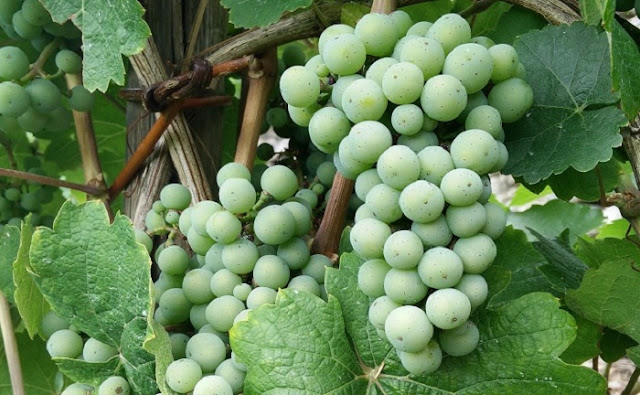 |
| Image from 123RF |
In last month’s blog, we went through and discussed the major red wine varieties in Australia, many of which are grown right here in NSW’s central west. There are avid wine drinkers that have a strong preference for either white or red, although many would be of the view that there is a time and place for both.
White wines are lighter than reds, with a softer, less rich taste, so they are often preferred in particularly hot weather. In comparison, red are generally the pick as an accompaniment to meals, but that’s not to say that a white on a summer’s evening with a light meal isn’t tops. As with most things, it all depends on your particular tastes!
Let’s take a look at the most prominent white wine varieties in Australia and what makes them special.
Chardonnay
Chardonnay is probably the first white wine that comes to mind and one of the most popular wines in Australia. A grape that is light green in colour is known for being quite easy to grow but not under all conditions (periods of high humidity close to the ripening can cause headaches for growers particularly organic ones as mildews can infect the crop), Chardonnay is often described as ‘neutral’ or ‘malleable’, meaning it can be easily influenced by the winemaker and different tastes and textures can be detected in every distinct batch. The green skinned grape is grown all over Australia, though it is said to be produced for commercial purposes for the first time in the Hunter Valley, NSW.
 |
| Photo by slgckgc via Flickr / CC BY 2.0 |
The grapes ability to be grown just about everywhere has made it one of the most available wine varieties for decades, so much so that there were times in which it was culturally unpopular to drink particularly when the vintage was “over oaked”. However more heavily oaked wines are now becoming popular again in some quarters. There was a time in the mid-90‘s where many people approached wine-drinking according to the adage ABC - anything but Chardonnay. This is also thought to be a response to the commercialisation of wine and the fact that Chardonnay was starting to be planted in favour of local, lesser-known drops.
 |
| Image from 123RF |
It’s difficult to explain the taste of Chardonnay and it differs according to everything from the soil in which it grew to the type of wood of the barrels it was stored in. Chardonnays have been described as having hints of citrus fruit, vanilla, coconut, melon and even toast. In the late nineties and early two thousands, the Cowra Wine Region received world acclaim for the quality its Chardonnay.
Riesling
Riesling is another wine variety that tastes different according to where its grapes are grown. The wine is particularly popular in Germany, where it is the most grown grape and can interestingly have notes of petroleum or even kerosine, which is appreciated and even revered by many people.
In Australia, certain Rieslings are said to have a unique lime-like taste. Other varieties have been described to exhibit flavours of honey, apple and other fruits. Riesling grapes are highly acidic and often become ripe late in the season, giving the wine comparatively good aging potential among other whites.
 |
| Image by Pixabay |
The sweetest of wines on this list, Riesling has a light, fresh texture making it ideal companion to a fish or chicken dish. The best Rieslings are grown in marginally cooler regions made unpopular for a while because of its over use in cask wines, it’s made a comeback in recent years. Notably Clare valley in South Australia and The Orange Wine region both have a good reputation for producing some excellent Riesling.
Sauvignon Blanc
With Riesling and Chardonnay, Sauv Blanc is considered among the three highest quality white wines in most wine-drinking circles. As is the case with the large majority of wines, the grape originated in France (Bordeaux) and over the past few centuries has been introduced and grown all over the Americas, Europe and Oceania.
 |
| Photo Credit: Devre White |
Again, a Sav Blanc can taste a variety of ways. In hot climates, it tends to have a tropical feel to it (due to over ripeness), with flavours resembling fruits like passion-fruit, peach and even pineapple. In cold climates, a grassy, more acidic, herbal taste is often picked on. Generally-speaking, many of the Australian-produced varieties are said to have something of a flat, sparse taste. It is often touted for how well it goes with seafood of all kinds. Interesting, Sauv Blanc is said to be just about the only wine that works as an accompaniment to Sushi. It is often enjoy slightly chilled and is generally rather fresh.
 |
| Photo by Amanda Slater via Wikipedia / CC BY-SA 2.0 |
While the Marlborough region of New Zealand has an international reputation as producing some of the best Sav Blancs worldwide, a New Zealand wine maker who recently sampled some grown at altitude from The Orange Wine Region observed “some New Zealand wine makers will be seriously worried if they were to taste this...”
These are arguably the most widely enjoyed white wines out there! There are countless other white (and red) wine varieties that we’ll be discussing in future articles. Check out our page next month as we’ll be featuring some of Australia’s best small-market and lesser-known wine districts that are well worth visiting if you have the chance! And if you are visiting Australia, do plan a quick trip to one of the most popular tourist attractions in NSW, Canowindra.
